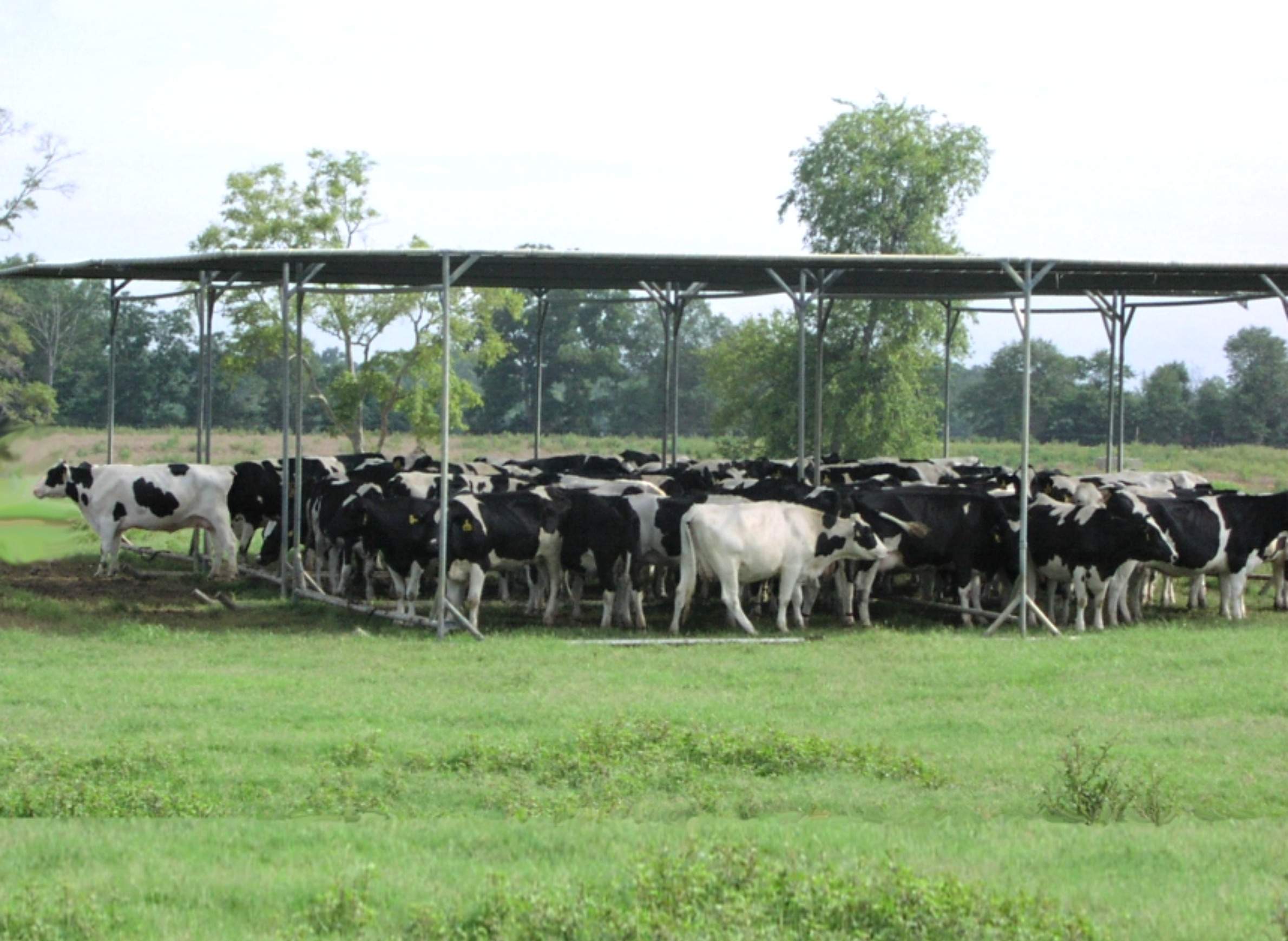
Buildings are not the only source of shade for animals.

Buildings are not the only source of shade for animals.
Hot weather and a high heat index are a challenge for farmers each summer. During heat waves, farmers need to take precautions for their animals to minimize the risk of injury and sickness from prolonged exposure to high temperatures and humidity.
When it comes to the business of farming, heat stress can lead to a reduction in animal performance and efficiency. Reduced milk production and an increased risk to disease among dairy cows is a good example of this issue. Therefore, farmers implement a variety management practices to reduce the effects of high heat, to help ensure the health of the animals and produce safe, wholesome food for consumers.
Providing shade, air and water are the three most important components for helping keep animals comfortable during hot weather.
Shade is a critical component to helping animals cope with hot, sunny conditions. Some farmers keep their livestock inside well-ventilated buildings during the day and allow the animals to only go outside at night when it is cooler. But buildings are not the only source of shade for animals. Other ways to provide shade include suspending shade cloth and or panels in areas that the animals can access.
Providing adequate ventilation is also key to helping keep animals cool. Newer farm buildings that house livestock are designed to circulate plenty of fresh air through them. Some examples include curtain-sided buildings and higher velocity fans. And improved ventilation systems are commonly retrofitted into older buildings.
Water is the third critical component for reducing heat stress in livestock. In addition to providing plenty of fresh clean water for animals to drink, farmers often use sprinkler systems to wet them down. The idea is to take advantage of evaporative cooling to help keep animals’ body temperatures lower.
In addition to the housing, ventilation and water management considerations, farmers can implement additional management practices to help reduce the effects of heat stress on animals. Here are several actions:
Wisconsin is home to about 1.3 million dairy cows, according to figures compiled by the state Department of Agriculture, Trade and Consumer Protection, and the challenge of keeping so many animals cool during a heat wave is no small task. To help provide more information about this management issue, the University of Wisconsin-Extension Dairy Team created a podcast series geared toward dairy farmers — it can offer more insight into the challenges they face in managing their herds in high heat.
Taking care of people is also important during heat waves, and many of the same principles used to keep animals comfortable apply to the humans caring for them. Re-arranging work schedules to avoid heavy tasks during the hottest parts of the day, taking frequent breaks and staying hydrated are critical to keeping everyone healthy.
Bill Halfman is an agricultural agent for the University of Wisconsin-Extension Monroe County.